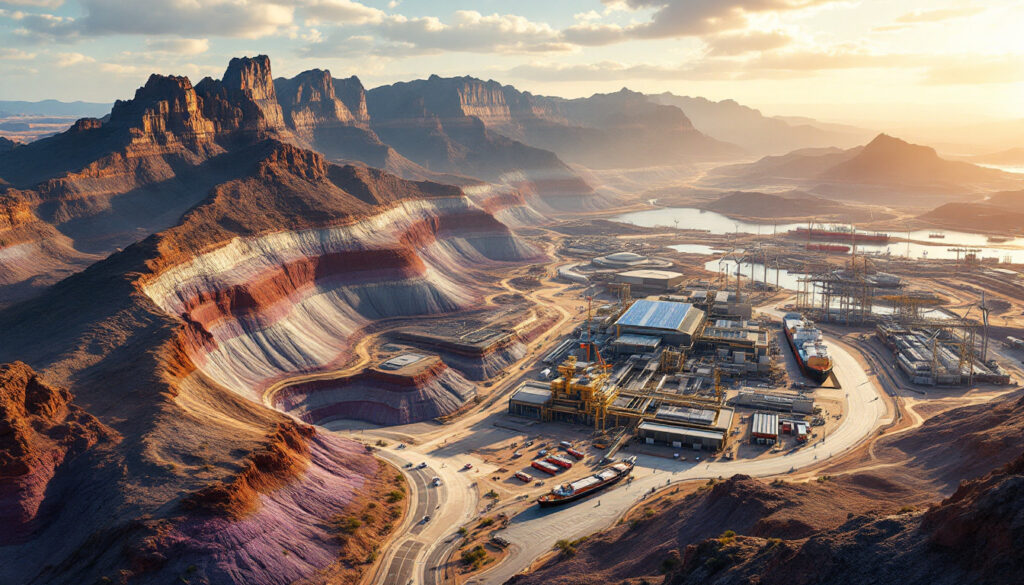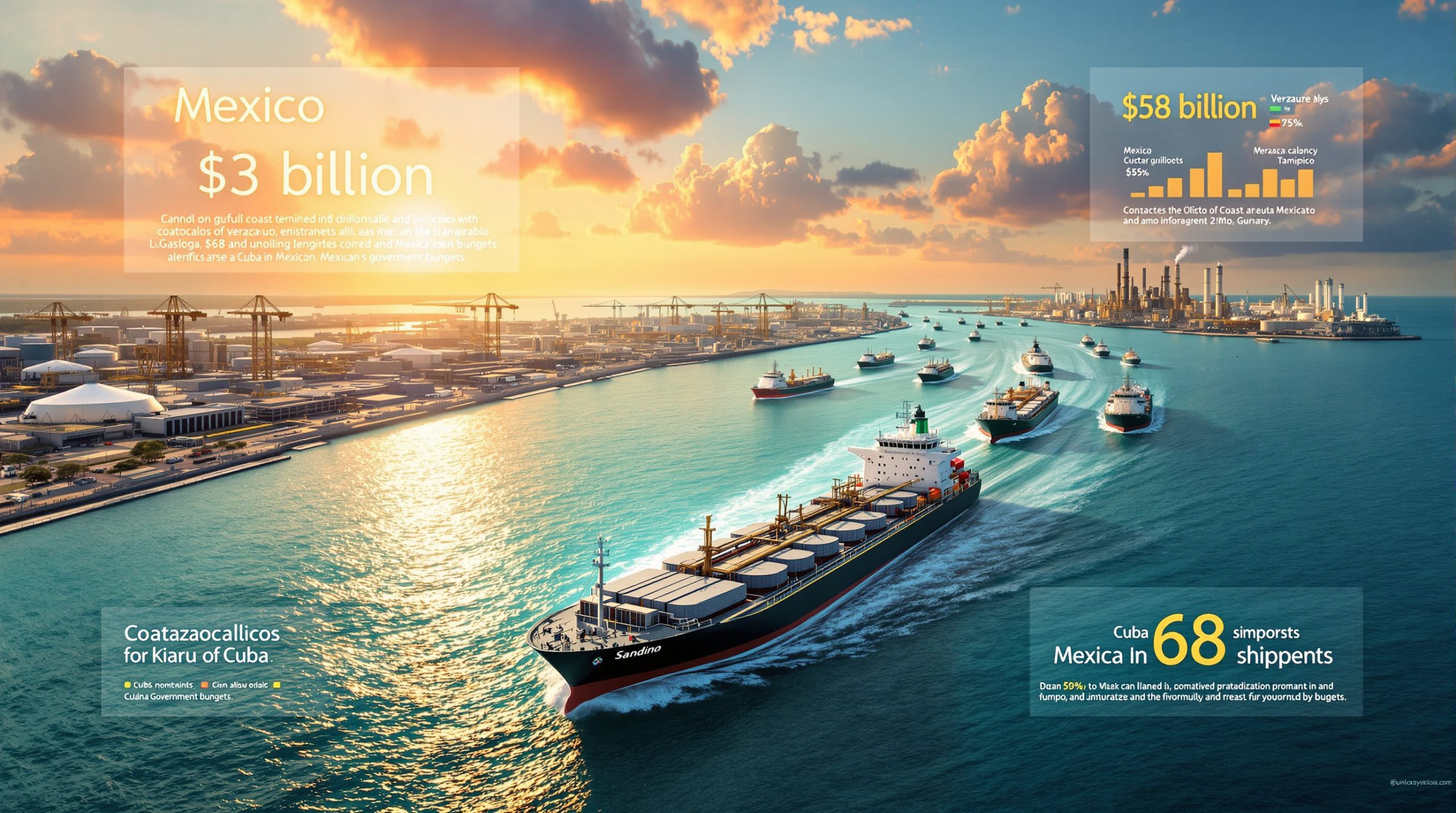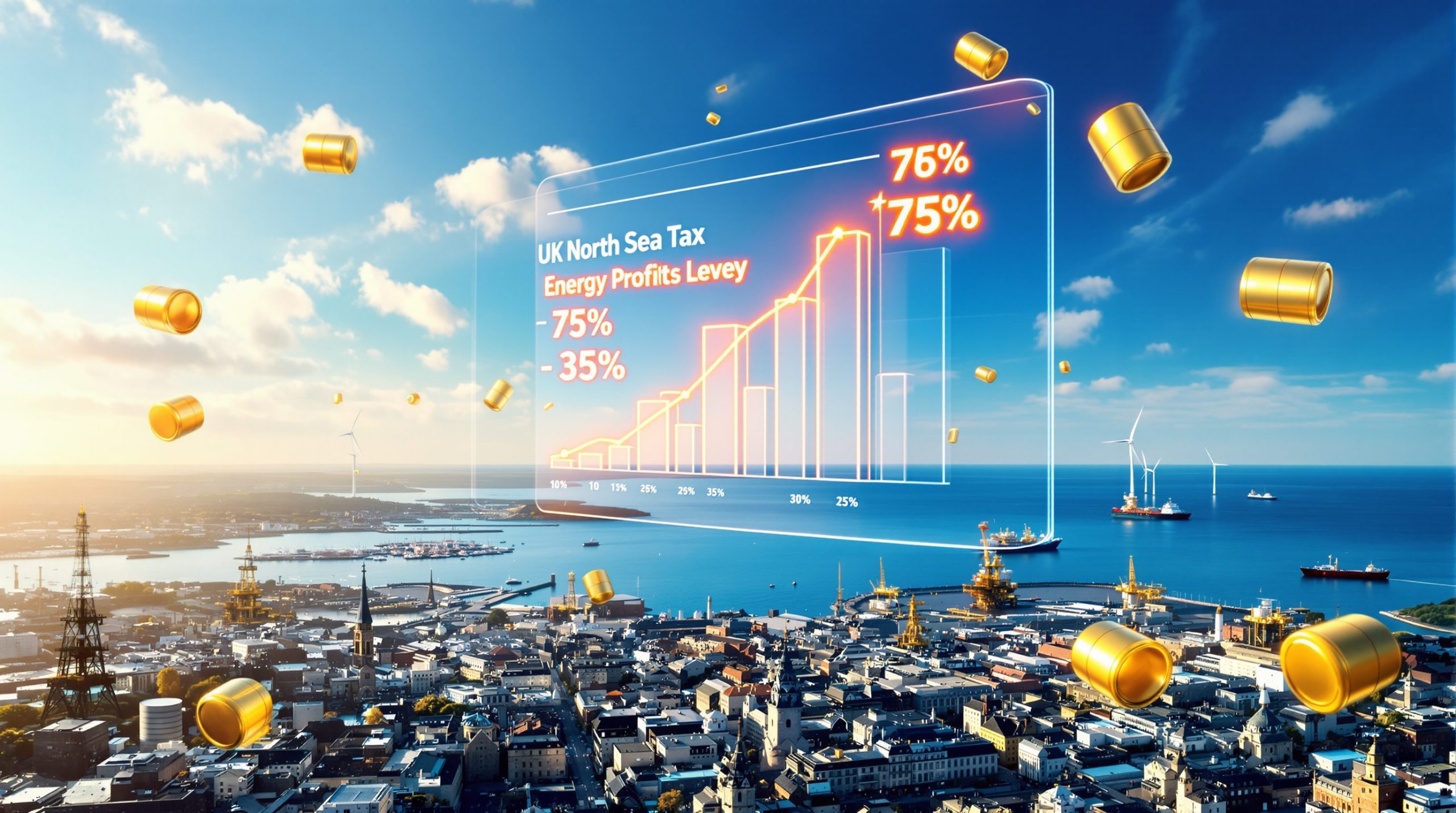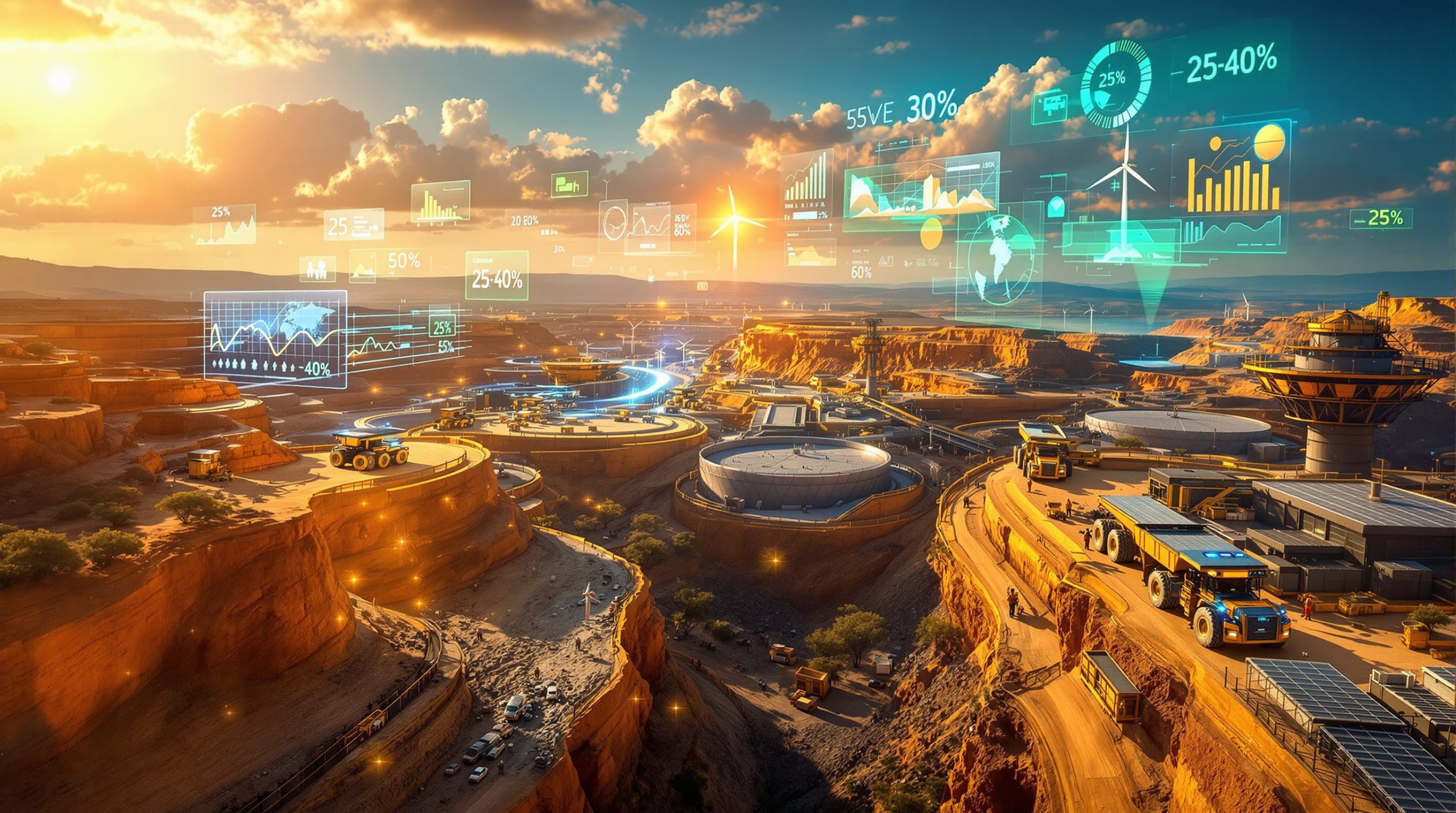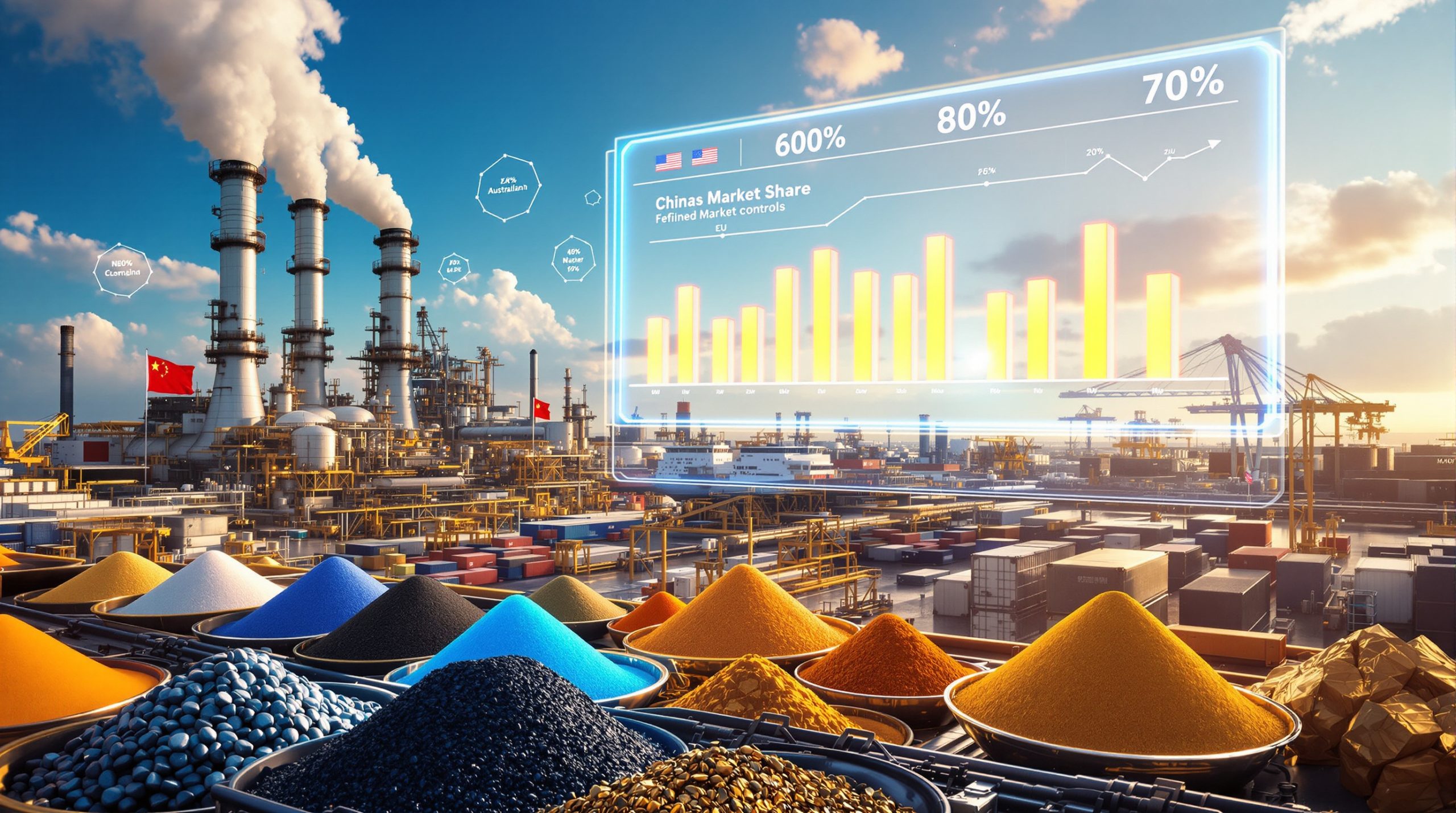What Are Critical Minerals and Why Do They Matter?
Critical minerals represent a strategic class of resources essential for advanced manufacturing across multiple sectors. These valuable materials are fundamental components in defense equipment, aerospace technology, medical applications, semiconductors, and fiber-optic cables. Beyond industrial applications, they're also crucial ingredients in everyday consumer electronics like smartphones and computers, as well as emerging clean energy technologies including electric vehicles, wind turbines, and solar panels.
The strategic importance of these minerals extends beyond their commercial value, representing a cornerstone of national security and technological sovereignty in the modern global economy. As countries race toward carbon neutrality goals, demand for these resources is projected to increase exponentially over the coming decades.
Australia's Critical Mineral Advantage
Australia stands in an enviable position with abundant deposits of rare earths, lithium, cobalt, and numerous other critical minerals essential for advanced manufacturing and renewable energy technologies. This natural wealth positions Australia as a potential keystone in global supply chains seeking reliability and geopolitical stability.
"Australia has a unique opportunity to move beyond being merely a quarry for raw materials and develop downstream processing capabilities that add substantial value to our mineral resources," notes Professor Caitlin Byrt from the Australian National University, emphasizing the nation's potential to transform its mining sector.
This resource advantage has not gone unnoticed internationally. Japan, South Korea, the United Kingdom, and the European Union have all either signed formal agreements or initiated discussions with Canberra regarding preferential access to these strategic resources. These partnerships reflect growing concerns about supply chain vulnerability and excessive dependence on dominant producers like China.
How Will Trump's Tariffs Impact Australia's Mineral Industry?
The recent announcement of significant tariffs by the Trump administration has sent shockwaves through Australia's export sectors. These measures include hefty 25% tariffs on steel and aluminum exports and 10% on most other Australian products entering the United States market.
Notably, the tariff structure includes strategic exceptions for pharmaceuticals and certain critical minerals—a carve-out that reveals underlying American concerns about supply chain security for these essential resources. Meanwhile, regional neighbors face even more punitive measures, with China, Malaysia, and Cambodia confronting tariffs reaching up to 49%.
"These tariffs represent a fundamental challenge to Australia's export-oriented economy, but they also highlight the strategic leverage our critical minerals provide," explains Shadow Trade Minister Kevin Hogan. "Our supply chain reliability for these important minerals gives us a strong negotiating position that transcends typical trade discussions and enters the realm of national security cooperation."
Albanese's Five-Point Response Plan
Prime Minister Albanese has quickly mobilized a comprehensive five-point plan to address these trade headwinds. Central to this strategy is positioning Australia's critical minerals assets as a counterbalance to tariff pressures. The plan includes strengthening anti-dumping regimes to prevent market manipulation by global competitors—a measure that has notably garnered bipartisan support from the Coalition.
This rare consensus between major political parties underscores the strategic rather than merely economic nature of Australia's critical minerals policy. The framework aims to transform potential vulnerability into negotiating strength by emphasizing Australia's role as a trusted supplier of resources essential to American technological and military capabilities.
What Is Albanese's Critical Minerals Strategy?
The Albanese government's critical minerals strategy represents a significant departure from Australia's traditional approach to resource development. According to senior Labor sources, the administration is determined to move beyond Australia's historical role as "just a quarry" supplying raw materials to global markets.
"We have a once-in-a-generation opportunity to develop processing capabilities domestically rather than simply exporting unprocessed minerals," a senior government official explained. This vision encompasses establishing a sophisticated industry position that captures more value from Australia's natural resources while creating high-skill employment opportunities throughout the supply chain.
Strategic Critical Minerals Reserve
A centerpiece of the government's strategy involves developing a strategic critical minerals reserve—a concept gaining traction as Australia navigates the new tariff landscape. This innovative approach would involve the Commonwealth purchasing critical minerals directly from Australian producers to create a strategic stockpile.
The reserve would serve dual purposes: either finding optimal international markets for these resources at advantageous prices or storing them for future use by allies and domestic applications. This approach mirrors strategic petroleum reserves maintained by many developed nations but applies the concept to the minerals essential for next-generation technologies.
Henry Campbell from the Australian Strategic Policy Institute notes the significance of this approach: "Establishing domestic processing capabilities coupled with strategic reserves positions Australia not just as a supplier but as a guaranteed source of processed critical minerals—giving us substantial leverage in international negotiations."
How Could Critical Minerals Provide Leverage Against Tariffs?
As global supply chains undergo realignment driven by geopolitical tensions, Australia's critical minerals represent a powerful bargaining chip in trade negotiations with the United States. Washington has been actively pursuing strategies to reduce its dependence on China's critical mineral supply chains, creating an opportunity for Australia to position itself as a preferred alternative.
"If we are able to set up robust processing capabilities here in Australia, it would give us significant leverage," explains Campbell. "The U.S. is desperate to decouple from China in these strategic supply chains, and Australia represents one of the few friendly nations with both the mineral resources and political stability to fill that gap."
Supply Chain Reliability as a Bargaining Chip
Shadow Trade Minister Kevin Hogan has emphasized Australia's "supply chain reliability" for critical minerals as a key selling point in negotiations with the United States. This reliability factor extends beyond mere commercial considerations into the realm of national security, potentially offering Australia a pathway to tariff exemptions through strategic rather than purely economic arguments.
"When you're dealing with minerals essential for defense applications and critical infrastructure, reliability of supply transcends price considerations," notes Hogan. "Australia's geological advantages combined with political stability make us an ideal partner for nations concerned about resource security."
Industry analysts suggest this security premium could potentially offset tariff impacts if properly leveraged in bilateral negotiations. With China controlling approximately 60% of global rare earth mining and a staggering 85% of processing capacity, insights on global rare earth reserves show Australia's alternative supply chains hold strategic value that may translate into economic concessions.
What Challenges Does Australia Face in Scaling Up Critical Minerals?
Despite the promising outlook, rapidly scaling up Australia's critical minerals sector faces significant hurdles. Regulatory frameworks and approval processes represent substantial bottlenecks to accelerated development, even with government prioritization of critical mineral sites.
"One of the big barriers is getting through the approval stage," Campbell acknowledges. "Even with the current government prioritizing these projects as strategically important, the regulatory machinery moves slowly." This tension between urgency and proper oversight creates challenges for timely sector development.
Environmental and Cultural Considerations
Professor Caitlin Byrt from the Australian National University highlights another fundamental challenge: balancing resource development with environmental and cultural protection. "Traditional extraction methods for critical minerals often require toxic chemicals and generate significant waste," she cautions. "If Australia ramped up critical resource extraction and processing using existing approaches, this would likely destroy important and irreplaceable cultural and environmental assets."
This environmental concern is particularly acute given that many critical minerals operations require chemical processing that can generate hazardous byproducts. Without innovation in extraction and processing methodologies, scaling up operations could create environmental liabilities that undermine the sector's sustainability.
Developing Sustainable Practices
To address these challenges, Australia must adopt innovative best practices that protect cultural and environmental assets while developing critical mineral resources. This balanced approach requires significant investment in research and development of cleaner extraction and processing technologies.
The CSIRO's Sustainable Minerals Institute has been pioneering bioleaching techniques that utilize microorganisms to extract minerals with reduced chemical inputs—one example of innovation that could allow Australia to scale operations while maintaining environmental standards. Such approaches will be essential for creating a sustainable industry that genuinely supports clean energy transitions rather than merely shifting environmental impacts.
How Does This Strategy Fit Into the Global Critical Minerals Competition?
The global landscape for critical minerals represents one of the most consequential geopolitical competitions of the coming decade. China currently dominates critical minerals production, refining, and processing globally—a position it has strategically cultivated through decades of focused investment and policy support.
This dominance has created vulnerability for Western nations, particularly as demand for these minerals increases with the acceleration of renewable energy adoption and defense modernization programs. The competition to develop alternative supply chains has consequently become a priority issue for Australia, the United States, and Indo-Pacific allies seeking to reduce dependence on Chinese supplies.
Potential for International Partnerships
Australia's critical minerals strategy extends beyond bilateral relations with the United States, offering opportunities for multilateral cooperation. The government has already engaged with Japan, South Korea, the United Kingdom, and the European Union regarding preferential access to these resources.
These partnerships could potentially evolve into joint ventures for processing facilities, technical knowledge exchange, and coordinated stockpiling efforts. Australia's critical minerals grant advancing innovation represents one formalization of these developing relationships, potentially enabling coordinated responses to market disruptions and supply challenges.
By positioning itself as a nexus for trusted critical mineral supply chains, Australia can strengthen its geopolitical standing while simultaneously creating economic opportunities through value-added processing and international investment in domestic capabilities.
What Are the Political Dimensions of the Critical Minerals Strategy?
The development of Australia's critical minerals strategy has emerged as a rare area of substantial bipartisan agreement in an otherwise polarized political landscape. Coalition sources have indicated broad support for elements of Albanese's approach, particularly strengthening anti-dumping regimes to protect domestic producers from market manipulation.
This consensus suggests the potential for policy continuity regardless of election outcomes—a crucial factor for international partners and investors considering long-term commitments to Australian supply chains. The shared recognition of critical minerals as a strategic rather than merely economic asset transcends typical partisan divisions.
Election Campaign Context
The critical minerals strategy is being unveiled during an election campaign period, with both major parties likely to announce related policies. The Coalition is expected to reveal plans to boost funding for export market development grants, potentially accelerating international market access for Australian critical minerals producers.
Labor's $500 million Modern Manufacturing Initiative has already directed significant funding toward critical minerals projects, emphasizing the administration's commitment to developing processing capabilities rather than merely exporting raw materials. This approach aligns with broader efforts to diversify Australia's economic base beyond traditional resource extraction.
As the campaign progresses, voters can expect both parties to emphasize their commitment to developing this strategic sector, though with potential differences in implementation approaches and funding priorities. Additionally, understanding Trump's policies reshaping global commodity markets is essential in this context.
FAQ: Australia's Critical Minerals Strategy
What specific critical minerals does Australia possess?
Australia holds significant deposits of 21 of the 24 critical minerals listed by the U.S. Department of Energy as strategically important. These include substantial reserves of rare earth elements, lithium, cobalt, manganese, and high-grade bauxite. The nation produces approximately 55% of the world's lithium, positioning it as a global leader for this essential battery component.
How quickly could Australia scale up its critical minerals processing?
While immediate large-scale expansion faces regulatory and technical challenges, focused government efforts could achieve meaningful results within 3-5 years. Industry experts suggest that with appropriate investment and regulatory streamlining, several major processing facilities could be operational by 2028, though full supply chain development would likely extend over a decade.
Will the critical minerals reserve be exclusively for the United States?
Current information indicates the strategic reserve would serve multiple purposes and partners rather than exclusively supporting U.S. interests. The government envisions potential supply arrangements with Quad allies (including the U.S., Japan, and India) as well as European partners, creating a flexible resource that can be deployed according to Australia's strategic and economic interests. BHP's strategic response to global trade challenges provides insights into how major mining companies are positioning themselves in this evolving landscape.
How might environmental concerns be addressed in critical mineral development?
Sustainable development will require significant innovation in extraction and processing technologies. The CSIRO's Sustainable Minerals Institute is currently developing techniques like bioleaching, which uses microorganisms rather than harsh chemicals for extraction processes. Additionally, comprehensive consultation with Indigenous communities and stringent water management protocols will be essential components of environmentally responsible development, addressing ESG challenges transforming the mining industry.
Ready to Capitalise on the Next Major Mineral Discovery?
Discover significant ASX mineral discoveries before the market with real-time alerts from Discovery Alert's proprietary Discovery IQ model, turning complex mineral data into actionable insights. Explore why major discoveries like those in Australia's critical minerals sector can generate substantial returns by visiting Discovery Alert's dedicated discoveries page.
